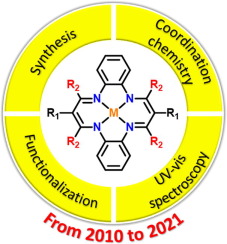
Title: Researchers Create Innovative Metal-Centered Planar Annulene Molecules: A Milestone in Materials Science
In a significant leap forward in organometallic chemistry, an international collaboration of researchers from China and the United States has triumphantly developed a new range of compounds: metal-centered planar annulene structures. This groundbreaking endeavor unveils a fresh category of highly conjugated, planar molecules featuring a metal atom at the center of a carbon ring. These configurations promise substantial potential as molecular building components for cutting-edge applications in electronics, catalysis, and photonics, possibly paving the way for future breakthroughs in materials science.
What Are Annulenes?
Annulenes are monocyclic hydrocarbons defined by alternating single and double carbon-carbon bonds, creating a conjugated ring framework. They conform to the general molecular formula CnHn or CnHn+1, depending on the count of carbon atoms (n) present in the ring. Benzene (C6H6), a fundamental and widely recognized annulene, illustrates aromatic stability—a crucial characteristic of these compounds.
Annulenes have played a vital role in the evolution of aromaticity theory and are recognized for their ability to coordinate with various metal atoms. Typically, in metal–annulene complexes, the metal resides outside the ring, positioned either above or below the molecular plane. A classic representation of this arrangement is ferrocene, where an iron atom is encased between two cyclopentadienyl (five-carbon) rings.
Planar Metallo-Annulenes: Surmounting Synthetic Challenges
Until now, the challenge of embedding a metal atom directly within the plane of a conjugated annulene ring system had remained unresolved. The synthetic complexity arises from the need to balance ring strain, cavity size, and orbital compatibility. In contrast to sandwich-type complexes like ferrocene, planar metal coordination within a carbon ring poses intricate spatial and electronic challenges.
The recent advancement revolves around three newly fabricated [15]-annulene molecules, each incorporating a 15-carbon framework formed from five interconnected rings, with an osmium atom accurately positioned within the molecular plane. The research group achieved success by utilizing a bottom-up synthetic approach: instead of adding the metal to a pre-existing ring, they constructed the carbon ring around a central metal atom through controlled reaction processes.
A New Synthetic Approach: Constructing Around Osmium
The researchers initiated their synthesis with a reactive osmium-carbon triple bond as a starting point. Utilizing an meticulously orchestrated four-step sequence featuring cycloaddition reactions, they formed carbon-carbon bonds around the metal core to create a durable 15-membered ring system.
The result was a new class of stable, planar metallo-annulenes. In addition to synthesizing the parent molecule, the team produced three derivatives via selective halogenation and nitration, yielding chlorinated, iodinated, and nitrated variants of the original compound. These derivatives maintained the remarkable conjugation and planar conformation, showcasing the method’s flexibility and scope.
Structural and Electronic Characteristics
Comprehensive characterization—utilizing spectroscopy, crystallography, and computational modeling—demonstrated that the final structures exhibit extended π-conjugation and chemical behavior akin to expanded porphyrins. Porphyrins, such as those present in hemoglobin and chlorophyll, are recognized for their planar, hollow architectures that bind metals at their core. However, in contrast to porphyrins, these new planar metallo-annulenes lack heteroatoms (e.g., nitrogen), relying solely on carbon to coordinate the central metal.
This advancement broadens the concept of aromaticity and metal–carbon bonding, connecting the classical domains of organometallic chemistry with coordination chemistry.
New Perspectives in Material Design
The outstanding thermal and chemical stability of these osmium-centered annulenes, coupled with their rich electronic attributes, positions them as prominent candidates for a variety of high-tech implementations:
– In electronics: As highly conjugated, planar molecules, they may be utilized to construct organic semiconductors and conductive polymers.
– In catalysis: The central metal site can function as an active catalytic center embedded within a sturdy aromatic scaffold.
– In photonics: Their adjustable electronic properties could be advantageous for creating light-absorbing or light-emitting materials.
What Lies Ahead?
Motivated by the successful integration of osmium, the researchers intend to modify their synthetic strategy for other transition metals. This could pave the way for an expanded “library” of planar metal–carbon aromatic systems with customizable physical and chemical properties.
The discovery fundamentally alters the design principles of metalla-aromatic systems, providing insights that deepen our comprehension of chemical bonding and molecular structure. This breakthrough not only fosters new prospects for fundamental research but also establishes a groundwork for the forthcoming generation of responsive, metal-organic materials.
As chemistry advances into a field akin to molecular engineering, such precisely designed compounds underscore the impact of synthetic ingenuity in revealing new frontiers in material functionality and structural diversity.
Reference:
Nature. “Metal-Centred Planar Annulene Frameworks.” https://www.nature.com/articles